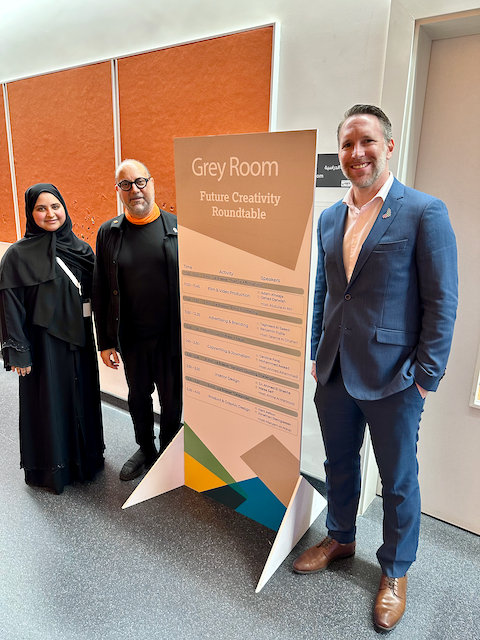On Sunday, June 25th, 2023, I found myself immersed in an extraordinary experience — the Mubadala Masary Program. This event brought together over 250 high school Emirati students from grades 9 to 11, fostering inspiration and empowering young minds. In the Industry Roundtables: Future Creativity session, I had the privilege of representing Product & Graphic Design alongside Hani Asfour, the esteemed Dean at the Dubai Institute of Design and Innovation. Hosted by Maryam Ali AlMarar from Mubadala and co-organised by Anna Batchelder, Samia Hasan and the wonderful team at Bon Education, this event served as a platform for us to share our career stories, advocate for pursuing creative passions, and discuss the exciting possibilities beyond the boundaries of traditional #STEM fields.

During our five sessions, Hani and I emphasised the importance of the four C’s of 21st-century skills:
Drawing from our own experiences, we shared our career journeys, highlighting the significance of investing in one’s creative passions. We shattered the misconception that success is solely measured by pursuing STEM fields, challenging the traditional narrative dictated by family and friends. By advocating for the pursuit of creative passions, we aimed to awaken a sense of self-belief and inspire the students to embrace their own unique talents and aspirations.
While representing Product & Graphic Design, we felt a deep responsibility to broaden the students’ horizons and expose them to the diverse opportunities that design encompasses. We emphasised that design is not confined to graphic design alone but branches out into a myriad of disciplines. We introduced them to product design, service design, content design, business design and organisation design to name a few of the modern day career paths that are continuously evolving and disrupting all industries.
Service design was first introduced as a design discipline at the Köln International School of Design in 1991. Although the definition continues to evolve, it can be summarised as:
"The activity of planning and organising people, infrastructure, communication and material components of a service in order to improve its quality and the interaction between service provider and customers. The purpose of service design methodologies is to design according to the needs of customers or participants, so that the service is user-friendly, competitive and relevant to the customers."- Service Design Network
We gave examples of Service Design enhancing customer and consumer experiences across various sectors such as healthcare, transportation, and hospitality.
We had many questions from students about the rise of artificial intelligence (AI), and addressed the fear that graphic design and other design disciplines may become obsolete. We reassured them that while AI undoubtedly shapes the landscape of design, it is not a threat but rather a catalyst for transformation and collaboration. We explained that AI’s role lies in automating repetitive tasks, allowing designers to channel their energy towards strategy, research, ideation, and innovation. By embracing AI as a tool, designers can amplify their creative abilities and contribute to shaping a future where human ingenuity thrives alongside technological advancements.
As our sessions concluded, a sense of optimism filled the room. We had achieved our goal of opening the students’ minds and hearts to a world of creative possibilities. This was confirmed by the wonderful feedback we received. One student said:
"Thank you for joining us …. I really appreciate the time you put today to come and talk about your career. You inspired me and a lot … thank you!" - High School Student
The future belongs to these young Emiratis - who possess the power to attain further skills in thinking critically, creating passionately, collaborating effectively, and communicating eloquently. In the wake of the Mubadala Masary Program, I am filled with hope and excitement. I am confident that the Emirati youth will shape a future that celebrates innovation, creativity, and diversity.
Emirati youth, the future is bright, and it is yours to embrace and shape. The world awaits your unique talents, ideas, and perspectives. Unleash your potential and set forth on a path that reflects your passions, dreams, and the incredible power within you.
If you're interested in learning further, reach out to me for some coaching!

Find out if MentorCruise is a good fit for you – fast, free, and no pressure.
Tell us about your goals
See how mentorship compares to other options
Preview your first month
